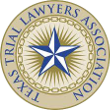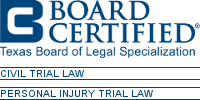CAROLE NEVILLE AND MICHAEL NEVILLE, Appellant v. MARCEL MOLINA, M.D., Appellee
NO. 14-00-00082-CV
COURT OF APPEALS OF TEXAS, FOURTEENTH DISTRICT, HOUSTON
2001 Tex. App. LEXIS 3784
June 7, 2001, Majority and Dissenting Opinions Filed
NOTICE:
[*1] PURSUANT TO THE TEXAS RULES OF APPELLATE PROCEDURE, UNPUBLISHED OPINIONS SHALL NOT BE CITED AS AUTHORITY BY COUNSEL OR BY A COURT.
SUBSEQUENT HISTORY:
Petitions for Review Denied December 20, 2001.
PRIOR HISTORY:
On Appeal from the 165th District Court. Trial Court Cause No. 98-52772. Harris County, Texas.
DISPOSITION:
Affirmed.
JUDGES:
Panel consists of Justices Yates, Fowler, and Wittig. Opinion by Leslie Brock Yates, Justice. Don Wittig, Justice, Dissenting.
OPINIONBY:
Leslie Brock Yates
OPINION:
MAJORITY OPINION
Appellants, Carole and Michael Neville, complain that the trial court erred in granting summary judgment in favor of appellee, Marcel Molina, M.D., on the basis that appellants’ claims were time-barred. We affirm.
I. Factual Background and Procedural History
Carole Neville underwent surgery on November 12, 1992, the purpose of which was to implant a restrictive gastric band–called a Dacron band–around the outside of her stomach in order to treat her morbid obesity, a medical term usually applied to someone who is 100 pounds or more over his or her ideal weight. Dr. Molina, who performed the surgery, was to place the gastric band approximately 1 1/2 ” below the bottom of her esophagus. Following her surgery, Carole remained in the hospital for [*2] two days. Almost immediately after she was discharged, Carole began experiencing problems, including an inability to keep down her food and medication, food getting stuck in her throat, gastrointestinal problems such as constipation and diarrhea, and constant and severe internal pain. Carole testified she believed the gastrointestinal problems were related to the gastric banding, perhaps by 1995 or 1996. According to her deposition testimony, between 1992 and 1995, Carole called Dr. Molina’s office several times with complaints–usually about an inability to eat food without regurgitation, and she was told by Molina’s staff to follow the instructions on a list she was given before surgery telling her how to conduct herself after surgery. Despite her problems, Carole had lost close to 100 pounds within a year of surgery.
By the Spring of 1996, in “chronic pain” and frustrated with the responses she was receiving from Dr. Molina’s staff, she began calling Dr. Molina’s office less and less often. She made her last call to his office sometime in 1996. Between 1993, when her weight had dropped to its lowest postoperative level, and the Fall of 1997, Carole continued to gain weight at the [*3] rate of a few pounds per month, even though she testified that she did not eat any solid foods after the surgery until the gastric band was removed in 1997.
In 1995, Carole referred herself to Dr. Yalamanchili for treatment of headaches she had endured since shortly after her surgery, as well as for treatment of her gastrointestinal problems. n1 Carole explained to Dr. Yalamanchili that she had undergone gastric banding surgery, but he told her that he was not familiar with this brand of surgery, other than what he had read about it. Although she continued to see Dr. Yalamanchili, he never told her that the gastric banding was the source of her problems. Carole’s obstetrician then referred her to a neurologist, but because the charge for an initial office visit cost around $ 1,000.00 and her insurance would not pay, she did not schedule an appointment. Around this same time, Carole also saw Dr. Zafarnia, who told her she had an ulcerated esophagus, perhaps due to overeating. Finally, Carole had the gastric band surgically removed September 19, 1997 by Dr. Brunicardi. At this time, she weighed approximately 180 lbs. After the surgery, Dr. Brunicardi informed Carole that Dr. Molina [*4] attached the gastric band to her esophagus, not her stomach as intended. Dr. Brunicardi also testified that Carole’s problems could have been diagnosed as early as 1993, and certainly by early 1996, when she began to suspect that the problems she was experiencing were caused by the gastric banding.
n1 Carole testified that she would not see a neurologist Dr. Molina had referred her to “because Dr. Molina referred me to him,” and she did not trust Dr. Molina anymore. Although not more precisely stated, Carole testified that this referral was made sometime between her surgery and 1995.
Within a week of Dr. Brunicardi’s surgery, Carole hired an attorney. On November 17, 1997, a little less than a month after her surgery, Carole’s attorney served a statutorily required letter upon Dr. Molina advising him of her claim. On February 12, 1998, the parties agreed to toll the statute of limitations, presumably in order to allow the parties an opportunity to evaluate their claims with an eye towards settlement. Unable to [*5] reach an agreement, the Nevilles filed suit in state district court November 3, 1998, alleging Dr. Molina was negligent in (a) attaching the gastric band to her esophagus and (b) failing to properly follow-up and investigate her postoperative symptoms. A little less than a year later, Dr. Molina filed a motion for summary judgment, alleging the Nevilles’ claims were barred by limitations. On December 13, 1999, his motion was granted.
II. Summary Judgment
[HN1] Summary judgment is proper only if there are no genuine issues of material fact and the moving party has established that he is entitled to judgment as a matter of law. TEX. R. CIV. P. 166a(c); Randall’s Food Mkts., Inc. v. Johnson, 891 S.W.2d 640, 644 (Tex. 1995). A defendant is entitled to summary judgment if he can disprove at least one element of each of the plaintiff’s causes of action or if he can establish all elements of an affirmative defense to each of the plaintiff’s claims. American Tobacco Co., Inc. v. Grinnell, 951 S.W.2d 420, 425 (Tex. 1997). In our review, we view the facts in the light most favorable to the non-moving party, and we resolve all inferences and doubts in favor [*6] of that party. Id.
Appellants advance two arguments in support of their claim that the trial court erred in granting summary judgment on the basis of limitations. First, they contend the “discovery rule” applies to cases brought under the Medical Liability and Insurance Improvement Act (“4590i”). Accordingly, they conclude that the discovery rule tolled the statute of limitations found in 4590i until Carole discovered, or should have discovered, that Dr. Molina tied the gastric band to her esophagus and not her stomach. Alternatively, they argue that 4590i’s statute of limitations violates the open courts provision found in the Texas Constitution. We address each of these arguments in turn.
A. The Discovery Rule in Medical Malpractice Cases
Section 10.01 of article 4590i provides:
Notwithstanding any other law, no health care liability claim may be commenced unless the action is filed within two years from the occurrence of the breach or tort or from the date the medical or health care treatment that is the subject of the claim or the hospitalization for which the claim is made is completed; n2 provided that, minors under the age of 12 years shall have until their [*7] 14th birthday in which to file, or have filed on their behalf, the claim. Except as herein provided, this subchapter applies to all persons regardless of minority or other legal disability.
n2 Although 10.01 appears to provide three alternative dates for determining when a cause of action accrues, where the date of the act made the basis of the suit is ascertainable, that date applies. Casey v. Methodist Hosp., 907 S.W.2d 898, 902 (Tex. App.–Houston [1st Dist.] 1995, no writ) (citing Kimball v. Brothers, 741 S.W.2d 370, 372 (Tex. 1987)).
[HN2] TEX. REV. CIV. STAT. ANN. art. 4590i, § 10.01 (Vernon Supp. 2000) (emphasis added). This Court has previously held that, “[HN3] with the passage of article 4590i … the legislature intended to adopt an absolute two-year limitations period and to abolish the discovery rule for medical malpractice claims.” Jones v. Miller, 964 S.W.2d 159, 164 (Tex. App.–Houston [14th Dist.] 1998, no [*8] pet.) (citing Morrison v. Chan, 699 S.W.2d 205, 208 (Tex. 1985) (emphasis added)). Our supreme court recently affirmed this principle. Chilkewitz v. Hyson, 22 S.W.3d 825, 829-30 (Tex. 1999) (citing Morrison and Diaz v. Westphal, 941 S.W.2d 96, 99 (Tex. 1997)). Thus appellants’ contention that the discovery rule tolled the limitations period because Carole’s injury was inherently undiscoverable is without merit. n3
n3 Although some courts of appeals, even in the context of a medical malpractice claim, have suggested that the discovery rule applies where the injury is inherently undiscoverable, see, e.g., Savage v. Psychiatric Inst. of Bedford, Inc., 965 S.W.2d 745 (Tex. App.–Fort Worth 1998, writ denied) and Slater v. National Med. Enter. Inc., 962 S.W.2d 228 (Tex. App.–Fort Worth 1998, writ denied), those suggestions are misleading because the discovery rule has no application under 4590i. Diaz, 941 S.W.2d at 99.
[*9]
B. Open Courts
Appellants also maintain that article 4590i, section 10.01, as applied to the instant case, violates the open courts provision of the Texas [HN4] Constitution. The supreme court has held that section 10.01 violates the open courts provision n4 if it cuts off an injured person’s right to sue before that person has had a reasonable opportunity to discover the wrong and bring suit. See, e.g., Neagle v. Nelson, 685 S.W.2d 11, 12 (Tex. 1985) (reversing summary judgment in favor of healthcare providers where surgical sponge was left in patient’s stomach, making it impossible to discover). Thus, section 10.01 is not unconstitutional per se, but depending on the particular circumstances of a given case, section 10.01 may be unconstitutional as applied to a particular plaintiff. Compare Sax v. Votteler, 648 S.W.2d 661 (Tex. 1983) (holding statute of limitations not unconstitutional as applied to plaintiff who discovered his injury within two years of doctor’s alleged misdiagnosis), and Robinson v. Weaver, 550 S.W.2d 18 (Tex. 1977) (same), with Neagle, 685 S.W.2d 11 (holding statute of limitations violated [*10] open courts provision as applied to plaintiff who could not have discovered his injury within two-year period), and Nelson v. Krusen, 678 S.W.2d 918, 921 (Tex. 1984) (same).
n4 TEX. CONST. art. I, § 13.
[HN5] In order to establish an open courts violation, the plaintiff must satisfy a two-part test. First, she must show that she has a cognizable common-law cause of action. Second, she must show that restriction of that claim is unreasonable or arbitrary when balanced against 4590i’s purpose. n5 Diaz, 941 S.W.2d at 100.
n5 “The language of section 10.01, along with the stated legislative findings and purpose of [4590i], clearly indicates a legislative intent to strictly limit the time for asserting health care liability claims, not only to avoid stale claims, but also to reduce the frequency of claims.” Hyson v. Chilkewitz, 971 S.W.2d 563, 577 (Tex. App.–Dallas 1998) (citing Sax, 648 S.W.2d at 666), overruled on other grounds, 22 S.W.3d 825; see also Tsai v. Wells, 725 S.W.2d 271, 273 (Tex. App.–Corpus Christi 1986, writ ref’d n.r.e.) (stating strict two-year statute of limitations enacted due to perceived medical malpractice insurance crisis) (citing Morrison, 699 S.W.2d at 208).
[*11]
Stated simply, the open courts provision, to the extent it works as an exception to the strict application of section 10.01, allows a plaintiff a “reasonable time” within which to bring a lawsuit after the party has discovered an injury or should have discovered the injury, thereby eliminating an otherwise draconian result from a mechanical application of section 10.01. See, e.g., Hellman v. Mateo, 772 S.W.2d 64 (Tex. 1989) (holding that, in the context of a defendant moving for summary judgment in a medical malpractice action, the proof must conclusively establish that the plaintiff discovered or should have discovered her cause of action and brought suit within the limitations period); see also LaGesse v. Prima Care, Inc., 899 S.W.2d 43 (Tex. App.–Eastland 1995, writ denied) (affirming physicians’ summary judgment, even though injury not discovered until after statute of limitations had expired, where plaintiff delayed for an unreasonable amount of time after learning of injury before bringing suit). “The reasonable-time rule is a court-made standard, which has heretofore been applied only in a limited number of cases involving adult plaintiffs [*12] who, because of the nature of their claim, did not have a reasonable opportunity to discover their injuries and bring suit within a prescribed limitations period.” Weiner v. Wasson, 900 S.W.2d 316, 321 (Tex. 1995) (citing Krusen, 678 S.W.2d at 921-22).
With the foregoing principles in mind, the issues we must decide in this case are (1) whether the summary judgment proof conclusively establishes that Carole either actually discovered her injury within two years of her surgery or should have discovered it within the period of limitations, and if not, (2) then whether she delayed an unreasonable amount of time before filing her lawsuit. See Morrison, 699 S.W.2d at 207. If either question is answered in the affirmative, then section 10.01 is not unconstitutional as applied.
It is undisputed that Carole’s surgery was performed November 12, 1992. If Dr. Molina were negligent, his negligence necessarily occurred in the operating room. Therefore, although she remained in the hospital for several more days after her surgery, November 12, 1992 is the date on which limitations began to run. n6 See Casey, 907 S.W.2d at 902. [*13] Carole did not file her lawsuit against Dr. Molina until February 12, 1998, n7 well outside the applicable statute of limitations. Accordingly, we now turn to whether section 10.01 is unconstitutional as applied to her.
n6 See, e.g., Husain v. Khatib, 964 S.W.2d 918, 919 (Tex. 1998) (affirming summary judgment in favor of physician whose failure to diagnose plaintiff’s cancer occurred on readily ascertainable dates, even though course of treatment by same physician eventually led to correct diagnosis). Here, Carole testified that she never actually spoke to Dr. Molina after the surgery, other than one time while she was still in the hospital. Limitations on her claim of negligence based on Dr. Molina’s alleged failure to diagnose the cause of her symptoms, a theory distinct from her claim that he negligently implanted the gastric band, therefore, began running no later than the time she was discharged from the hospital–or within just days of her surgery. See also Rowntree v. Hunsucker, 833 S.W.2d 103, 108 (Tex. 1992) (holding that date for determining when statute of limitations began to run was date of last office visit in September, not date on which doctor refilled prescription by phone the following May, or date when patient last filled that prescription in December). [*14]
n7 For the purposes of this discussion, we apply the date of the tolling letter.
Medical malpractice is a common-law claim. Andress v. MacGregor Med. Ass’n, 5 S.W.3d 855, 859 (Tex. App.–Houston [14th Dist.] 1999, pet. filed) (citing Humphreys v. Roberson, 125 Tex. 558, 83 S.W.2d 311 (1935)). Because Carole has satisfied the first prong of the open courts test, we consider whether restriction of her claim would be unreasonable or arbitrary when weighed against the purpose of section 10.01. See Diaz, 941 S.W.2d at 100.
Batten v. Hunt recently presented the Austin Court of Appeals with a similar question. 18 S.W.3d 235 (Tex. App.–Austin 1999, no pet.). There, the plaintiff’s husband, Roy Swope, underwent surgery in 1989 to remove a precancerous tumor from his colon. Id. at 236. Hunt treated Swope during three brief, postoperative hospitalizations, the last of which occurred in May 1989. The court found that, although the plaintiff demonstrated she had a cognizable common-law cause of action, she failed to show [*15] that the limitations period unreasonably restricted her claim because Swope’s “continuing symptoms [of severe fatigability, episodes of weight loss, severe diarrhea, and blood in his stools] certainly provided the impetus to seek further examinations well before 1996 [when Swope died].” Id. at 239. The court reasoned that once Swope reasonably should have felt the need to be examined, any failure by the doctor to tell him to get examined became a non-factor in Swope’s course of treatment. Id.
This Court has also addressed whether a patient had a reasonable opportunity to discover the injury and bring suit where there were physical manifestations of the illness within the two years after the surgery. Desiga v. Scheffey 874 S.W.2d 244 (Tex. App.–Houston [14th Dist.] 1994, no writ). In Scheffey, we noted that “courts do require some diligence and effort on the patient’s part in making inquiry of symptoms related to the treatment received.” Id. at 251. Because the summary judgment proof showed that the plaintiff complained of pain and was dissatisfied with his doctor within the two years after the surgery, yet did nothing [*16] about his situation, the statute was found not unconstitutional as applied to Desiga because he had a reasonable opportunity to discover his injury and to bring suit. Id. at 252.
Here, Carole testified without contradiction that, following her surgery, she suffered chronic pain, as well as a variety of gastrointestinal problems, including virtually constant, mechanically-induced vomiting, a term used to distinguish vomiting induced from nausea. More importantly, she testified that she no longer trusted Dr. Molina at least by 1995, and that by 1995 or 1996, she believed the gastrointestinal problems were related to the gastric banding. Assuming arguendo that it was reasonable for Carole’s injury to have gone undiscovered for the nearly three years preceding 1995–the approximate point at which she no longer trusted Dr. Molina–she then only had a “reasonable time” after that within which to bring suit. See, e.g., Wright v. Fowler, 991 S.W.2d 343, 351-52 (Tex. App.–Fort Worth 1999, no pet.) (holding section 10.01 not unconstitutional as applied to patient who experienced problems shortly after surgery, where patient requested his records from his [*17] doctor “months” after his final follow-up examination because he knew he would never go back and he did not think he could rely on doctor to keep them).
And assuming Carole was not unreasonable in failing to discover her injury after she ceased trusting Dr. Molina, she further testified that she believed her injuries were caused by the gastric banding by early 1996, well before her September 1997 surgery to remove it. As we previously pointed out, the open courts provision, as an exception to the two-year statute of limitations found in section 10.01, only provides a party a reasonable opportunity to file suit after she (1) actually discovered the cause of her injury or (2) should have discovered the cause of her injury. n8 It does extend limitations indefinitely until Carole knew with certainty that Dr. Molina was negligent. To conclude otherwise would have the effect of “reinstating the discovery rule clearly abrogated in section 10.01 of the Act.” Scheffey, 874 S.W.2d at 252. Accordingly, we hold that, on these facts, application of the strict time limitations of section 10.01 to Carole does not violate the open courts provision of the Texas Constitution.
n8 Cf. Gandara v. Slade, 832 S.W.2d 164 (Tex. App.–Austin 1992, no writ) (finding that section 10.01 was unconstitutional as applied to parents’ claims against physician who allegedly was negligent in recommending surgery in which daughter became infected with HIV, where although the summary judgment evidence showed the parents knew of their daughter’s condition for more than two-and-a-half years before they filed suit, that knowledge did not also have the effect of putting them on notice that the doctor was negligent in recommending their daughter have surgery).
[*18]
The judgment of the trial court is affirmed.
/s/ Leslie Brock Yates
Justice
Judgment rendered and Majority and Dissenting Opinions filed June 7, 2001.
Panel consists of Justices Yates, Fowler, and Wittig.
DISSENTBY:
Don Wittig
DISSENT:
DISSENTING OPINION
I respectfully dissent. First, the majority opinion fails to review the facts in the light most favorable to the non-movant. Carole was assured by Dr. Molina’s staff that her pain and symptoms were simply her body’s adjustment to the band. Carole was told she experienced an “optimal” result. Carole was never told the band was improperly placed. Carole underwent numerous diagnostic tests, GI panendoscopy, barium x-rays and small bowel series and yet still was not informed of the erroneously placed gastric band. Not until Dr. Brunicardi removed the band was she informed the band was misapplied to her esophagus. This occurred September 19, 1997 . She immediately sought legal advice, an attorney investigation transpired, and suit was filed.
Carole’s invocation of the constitutional “open courts” doctrine of “reasonable opportunity to discover the injury” is further corroborated by two experts. Dr. Molina quite [*19] reluctantly admitted the only way a patient could know the problem occurred during surgery was from the corrective surgery “If she so told.” Question: “She can’t do a self-examination, can she?” Answer: “That’s right. She would have to go by what the doctor told her.”
Dr. Brunicardi stated the incorrectly placed band would be discoverable by a physician but there was not any way a patient would make the discovery. Contrary to two medical experts, the majority opinion states that she should have known of the injury when she no longer “trusted” Dr. Molina. Scant authority is cited for this proposition and the principal cases cited by the opinion are not materially in point.
In Hunt, the Austin court dealt not with a hidden appliance that could not be discovered by the patient, but simply an alleged failure to recommend follow-up colonoscopies. Hunt, 18 S.W.3d at 239. The patient himself had symptoms from the doctor’s last treatment in 1989 until 1997. Id. The patient did not allege the doctor told him the surgery freed him from future vigilance, the doctor was negligent in removal of the polyp, the doctor misinterpreted the test results, or prescribed [*20] a harmful course of treatment. Here was alleged both misplacement of the gastric band and failure to follow-up post surgery and investigate the cause of her symptoms.
In Scheffey, also cited by the majority, the only pleading against Dr. Guerrero was negligent referral to Dr. Scheffey. Scheffey, 874 S.W.2d at 249. The date of referral was clearly known and yet the plaintiff waited 16 months after he learned from Dr. Barrash the surgery was unnecessary to bring suit against Guerrero. Id. at 246. Accordingly, the plaintiff did not effectively invoke the Open Courts doctrine to defeat the two year statute of limitation. While I do not take issue with the majority’s view that the discovery rule is no longer applicable, vestiges of the rationale of the rule remain as we pointed out in Scheffey. Id. at 249. The discovery rule did not apply at common law in misdiagnosis cases such as Hunt or Scheffey. Id. at 250. The discovery rule did apply when a foreign object, such as a sponge, was left in the body, or when a vasectomy went awry. Id. (citing Hays v. Hall, 488 S.W.2d 412, 414 (Tex. 1969); [*21] Gaddis v. Smith 417 S.W.2d 577, 580 (Tex. 1967) (cause of action for leaving sponge in patent body accrues when patient learns, or through diligence, should have learned, of presence of foreign object)). The policy reasoning was the tangible manifestation of negligence coupled with the lack of dependence on the plaintiff’s credibility. Id. The older discovery rule cases still provide insight today into the virtually equivalent issue of “reasonable opportunity to discover.” So too today, we are faced with an objectively verifiable injury that could not be known by Carole until the removal of the gastric band in 1997.
Because Carole raised a fact issue that she could not and did not have a reasonable opportunity to discovery her injury until 1997, I would reverse and remand the trial court’s summary judgment.
/s/ Don Wittig
Justice
Judgment rendered and Majority and Dissenting Opinions filed June 7, 2001.
Panel consists of Justices Yates, Fowler, and Wittig.








